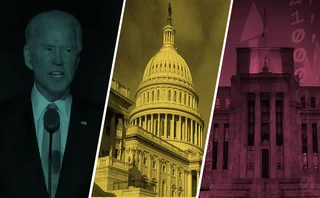
AI, funding US subsidiaries and a recipe for bank runs
The week on Risk.net, 19-25 May, 2018

Banks explore new data techniques to tackle money laundering
Artificial intelligence in tandem with human analysis seen as effective for know-your-customer
Foreign banks in US wary after funding costs rise
Following jump in Libor/OIS spread, many US entities continue borrowing from parents
EU parliament’s moratorium plan billed ‘recipe for bank run’
Proposal allows pre-resolution stay as well as one during resolution provided bank reopens in between
COMMENTARY: In the loop
EU and US regulators, in very different contexts, are pushing banks and other financial institutions to keep a human in the loop when handing over increasing power and autonomy to artificially intelligent software.
As well as in more established applications such as trading models, AI and machine learning are now coming into vogue in a number of new areas – among them anti-money laundering (AML), with automation seen as the only way to deal with the vast amounts of new data that will be gathered under the fifth EU Anti-Money Laundering Directive. It is hoped the technology can reduce soaring compliance budgets by targeting AML efforts more accurately.
But regulators are keen that AI should not be let off its leash. Last year, the US Federal Reserve warned against using machine learning alone to assess contagion risks in model networks, saying the approach lacked transparency. This year, AI-assisted AML will also be governed by the EU’s incoming General Data Protection Regulation (GDPR), which includes a ban on legally consequential decisions taken solely by automated means. This means AI can be used to flag suspicious cases, but the final decision must be taken by a human.
Controlling the use of black box models has been worrying regulators for some time – as they become more sophisticated, the challenge will only become greater. Increased use of improved AI and machine learning software shines a spotlight on the growing gap between legal responsibility and effective authority.
For how much longer will a human be able to second-guess, fast enough, the decisions of a machine in order to make a difference? That stage has already been passed in trading software – indeed, the whole point is for the machines to act faster than the human brain can comprehend.
The market relies on automated safeguards. But when the consequences of a machine error are more difficult to spot than a price spike or flash crash, both human supervision and automated safeguards may lack impact until long after the damage has been done.
STAT OF THE WEEK
New rules on securitisations introduced by the Australian watchdog this year contributed to an added A$375 million ($284 million) in aggregate capital charges at the country’s four largest banks.
QUOTE OF THE WEEK
“Banks do start realising that certain business models – let me be a bit brutal – based on sub-standard loan underwriting and excessive forbearance will have less of a future, will be less tolerated by markets and supervisors” – Peter Grassman, EC directorate of financial services
Further reading
Only users who have a paid subscription or are part of a corporate subscription are able to print or copy content.
To access these options, along with all other subscription benefits, please contact info@risk.net or view our subscription options here: http://subscriptions.risk.net/subscribe
You are currently unable to print this content. Please contact info@risk.net to find out more.
You are currently unable to copy this content. Please contact info@risk.net to find out more.
Copyright Infopro Digital Limited. All rights reserved.
You may share this content using our article tools. Printing this content is for the sole use of the Authorised User (named subscriber), as outlined in our terms and conditions - https://www.infopro-insight.com/terms-conditions/insight-subscriptions/
If you would like to purchase additional rights please email info@risk.net
Copyright Infopro Digital Limited. All rights reserved.
You may share this content using our article tools. Copying this content is for the sole use of the Authorised User (named subscriber), as outlined in our terms and conditions - https://www.infopro-insight.com/terms-conditions/insight-subscriptions/
If you would like to purchase additional rights please email info@risk.net
More on 7 days in 60 seconds
Bank capital, margining and the return of FX
The week on Risk.net, December 12–18
Hedge fund losses, CLS and a capital floor
The week on Risk.net, December 5–11
Capital buffers, contingent hedges and USD Libor
The week on Risk.net, November 28–December 4
SA-CCR, SOFR lending and model approval
The week on Risk.net, November 21-27, 2020
Fallbacks, Libor and the cultural risks of lockdown
The week on Risk.net, November 14-20, 2020
Climate risk, fixing Libor and tough times for US G-Sibs
The week on Risk.net, November 7-13, 2020
FVA pain, ethical hedging and a degraded copy of Trace
The week on Risk.net, October 31–November 6, 2020
Basis traders, prime brokers and election risk
The week on Risk.net, October 24-30, 2020







